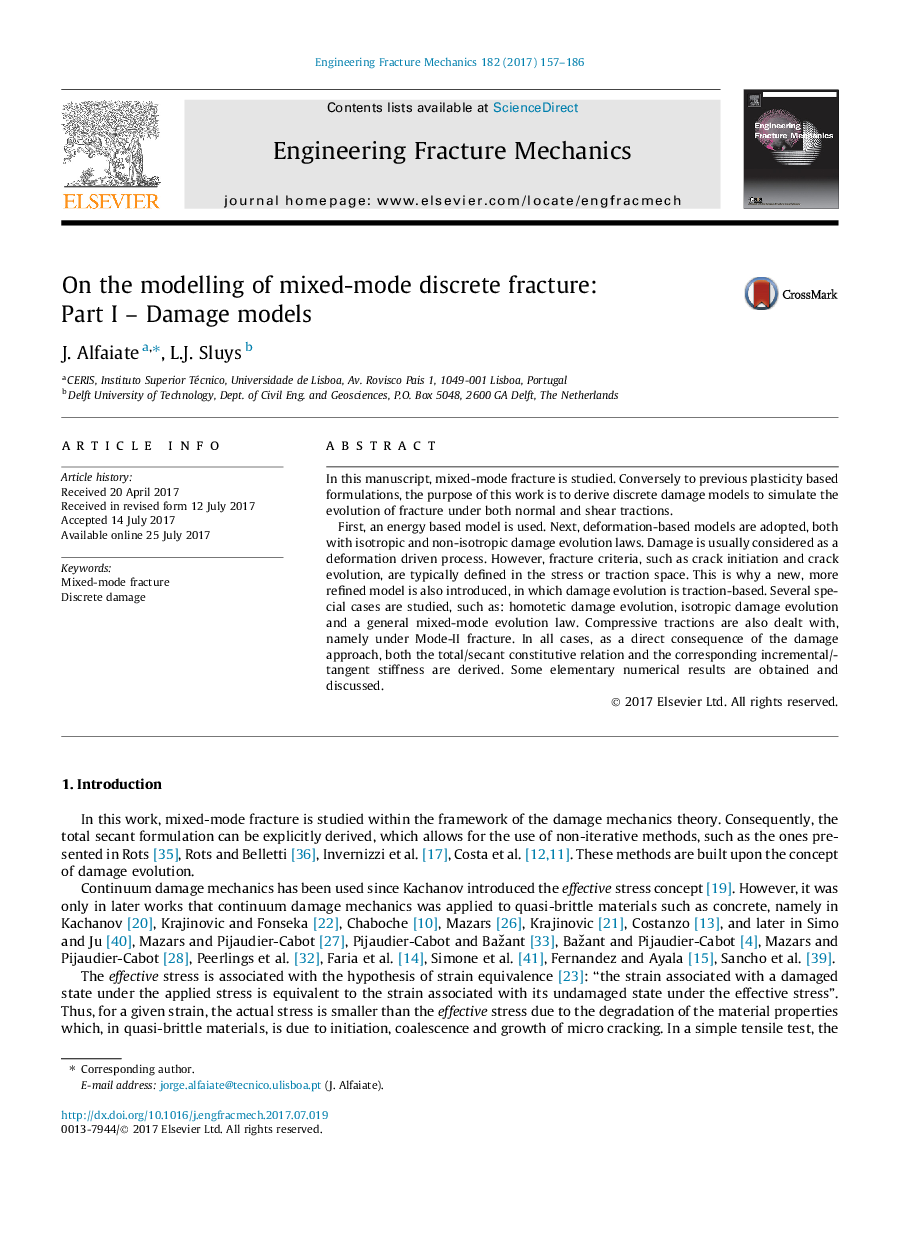| Article ID | Journal | Published Year | Pages | File Type |
|---|---|---|---|---|
| 5013802 | Engineering Fracture Mechanics | 2017 | 30 Pages |
Abstract
First, an energy based model is used. Next, deformation-based models are adopted, both with isotropic and non-isotropic damage evolution laws. Damage is usually considered as a deformation driven process. However, fracture criteria, such as crack initiation and crack evolution, are typically defined in the stress or traction space. This is why a new, more refined model is also introduced, in which damage evolution is traction-based. Several special cases are studied, such as: homotetic damage evolution, isotropic damage evolution and a general mixed-mode evolution law. Compressive tractions are also dealt with, namely under Mode-II fracture. In all cases, as a direct consequence of the damage approach, both the total/secant constitutive relation and the corresponding incremental/tangent stiffness are derived. Some elementary numerical results are obtained and discussed.
Keywords
Related Topics
Physical Sciences and Engineering
Engineering
Mechanical Engineering
Authors
J. Alfaiate, L.J. Sluys,
